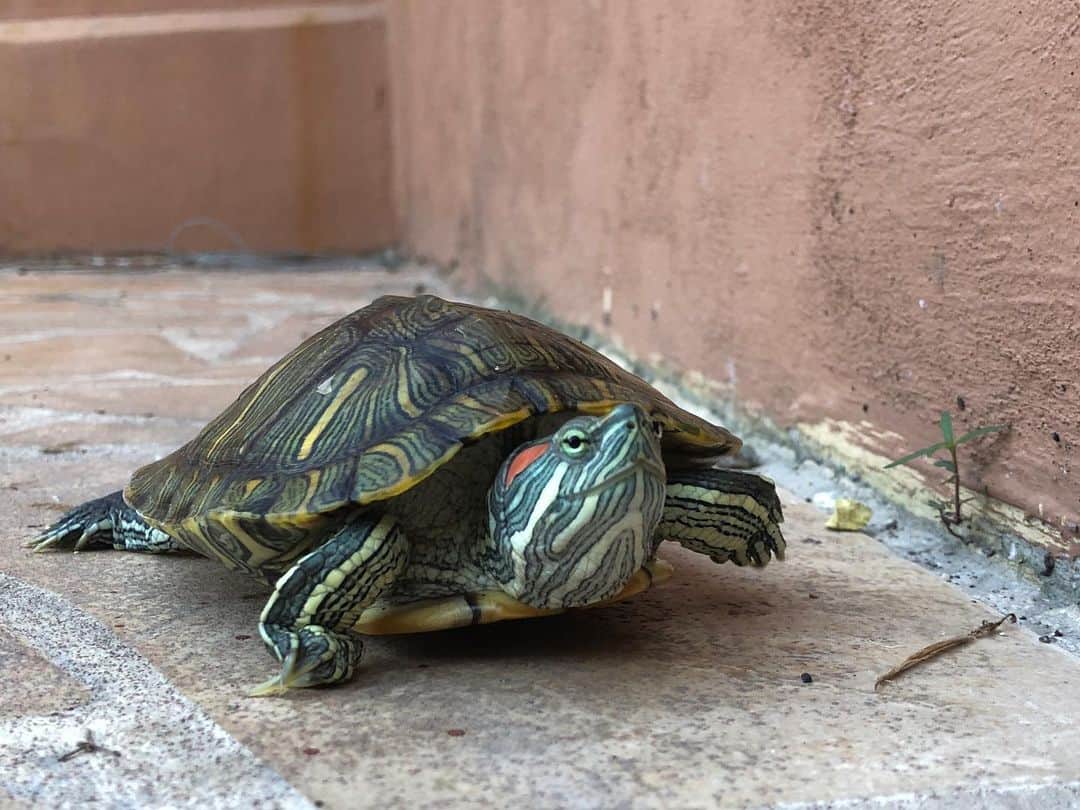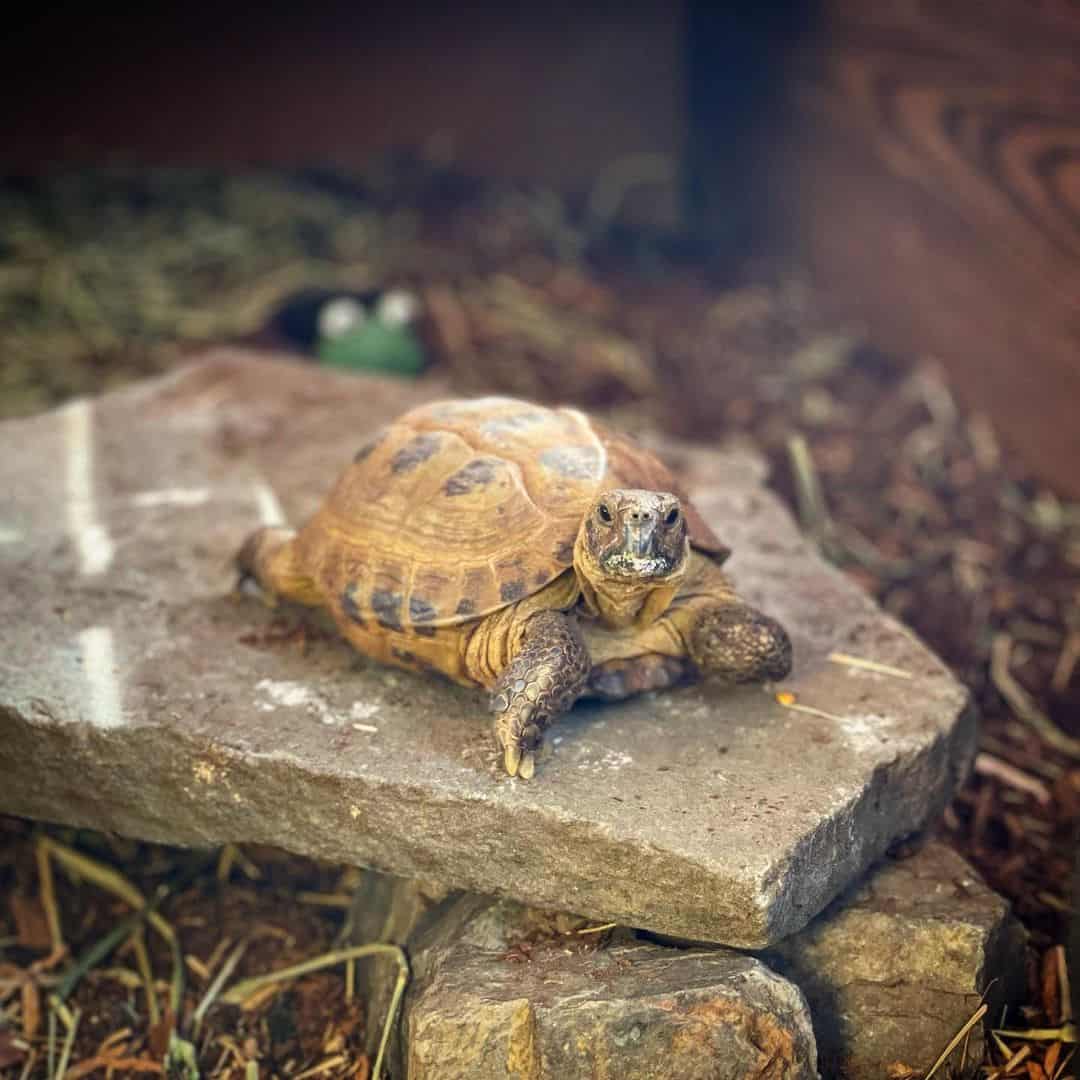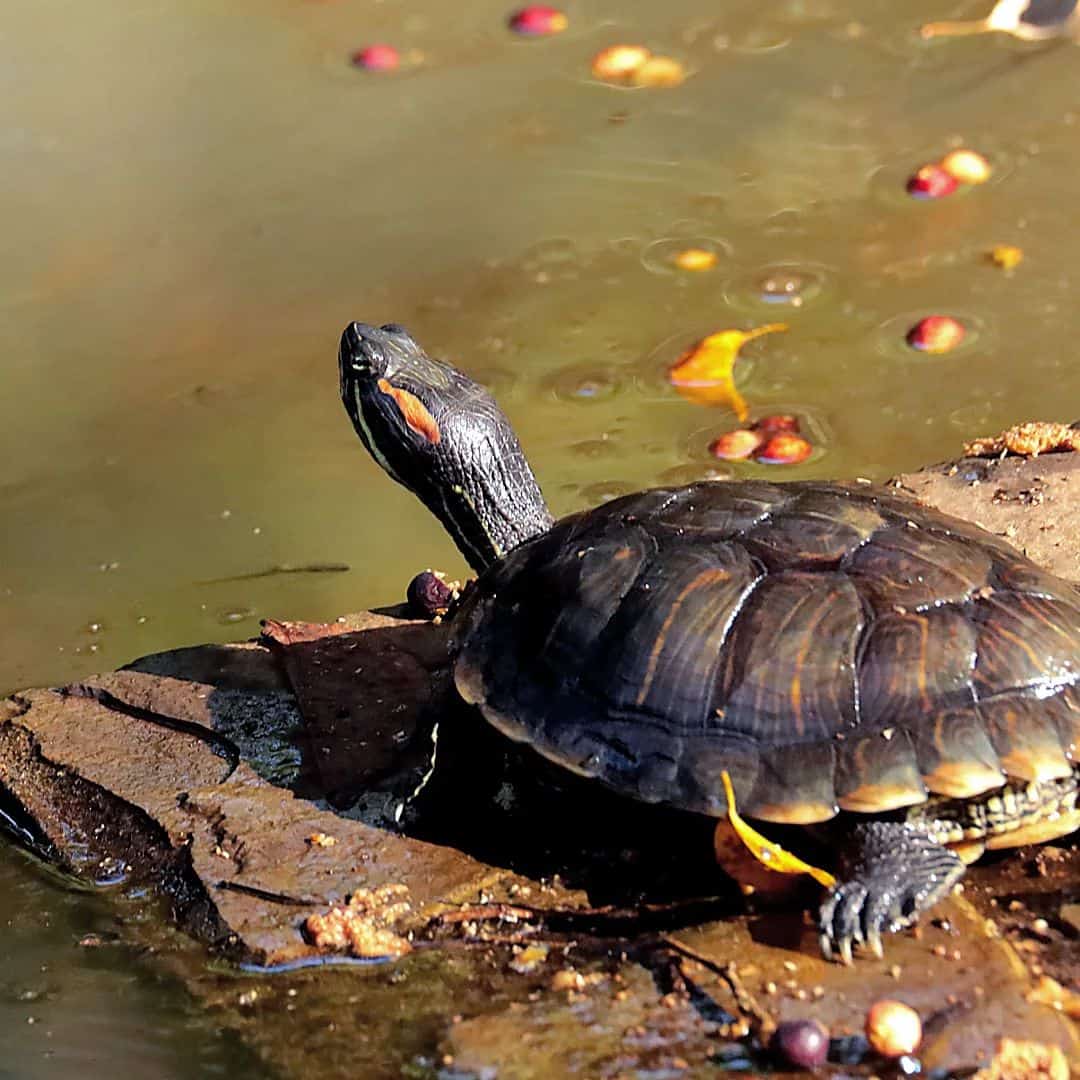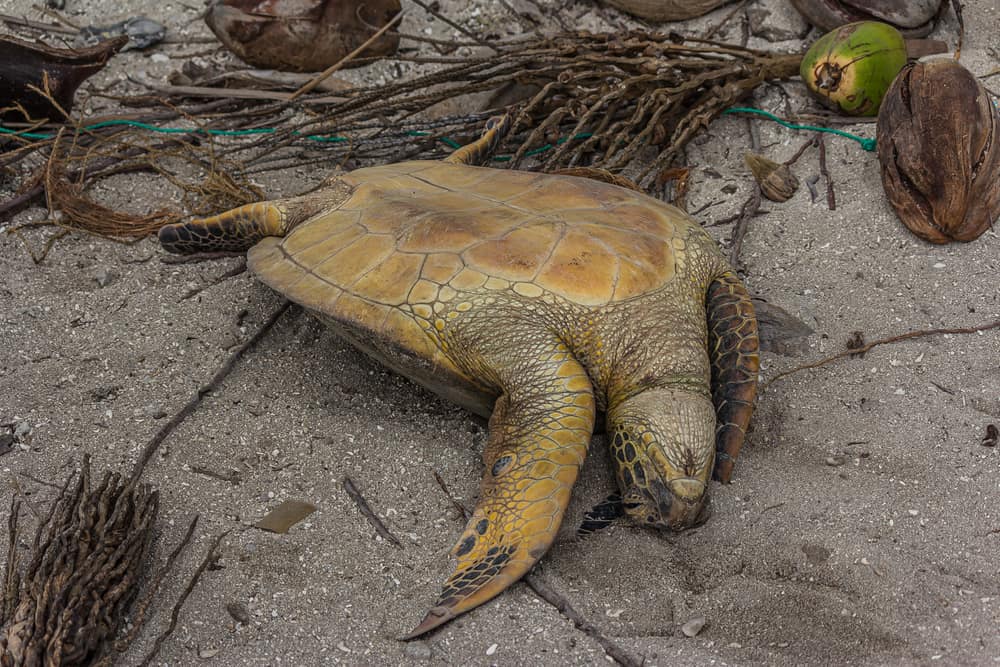Turtles, and their close tortoise cousins, are iconic animals because of their hard shells. It’s iconic to the point that many of us would have wanted to see them without one. What does a turtle look like without a shell, and can it survive without this reliable protection?
As you might expect, shells are indispensable to turtles, and envisioning a turtle without one can be a futile exercise. In this article, we’ll learn what the shell is to turtles, and how this amazing body part came to be.
The Turtle Shell
Although we might refer to the turtle shell as the iconic dome-shaped shell on top of the turtle, the entire shell structure actually extends to the belly of the turtle. As we’ll find out, the shell structure of the turtle forms a major part of its skeleton.
The shell structure has two main parts: the carapace and the plastron. Both parts are connected by a third part called the bridge.
Carapace
When we talk about shells, you might be referring to the domed upper shell that turtles seem to be carrying. This is called the carapace, which is actually a plethora of bones that have fused together to form this single structure with distinguishable components.
The carapace is formed with the turtle’s ribs and dermal bone. That means that this upper shell is, quite literally, their rib cage and spine fused together. However, we do not see this rib cage, as the carapace is protected by an outer layer of keratin plates known as scutes.
Scutes are an important part of the turtle since they protect the most exposed parts of the shell. They’re a pretty reliable form of protection, too: they are made from the same material found in our hair and nails, which means that they are reasonably hard, and can easily regenerate when damaged.
The carapace (as well as the rest of the shell) stays virtually the same throughout the lifetime of a turtle; they cannot grow a new shell when it is severely damaged.
Plastron
The underbelly of the turtle also forms a part of the shell structure, called the plastron. While the carapace of the turtle is formed from the fusion of the ribcage and dermal plates, the plastron is comparable to the sternum of other animals.
Similar to the carapace, the plastron is also protected by a layer of plastral scutes. In certain turtle species, the plastron is a good indicator of the sex of the turtle: a concave plastron means that the turtle is a male, to facilitate easier mounting during copulation, while a convex plastron indicated that the turtle is female
Can Turtles Live Without Their Shell?

As you might have gathered from our quick turtle anatomy lesson above, the turtle’s shell structure forms the ribcage, sternum, and other major bones of their skeletal system. That means that removing their shell effectively removes more than 50 bones from the turtle.
That’s a lot of bones to be missing from a single animal, much more from a turtle. Without those bones, a turtle is left incredibly vulnerable, if they even manage to survive without it.
In extension, it is also virtually impossible to see a turtle without a shell. The shell structure and the turtle are not separate entities; the shell is part of the turtle, without which they simply die.
Inside a Turtle Shell
Now, you can instead try to visualize what a turtle would look like without a shell by knowing what’s inside a turtle’s shell. However, you might be uninterested to know that you’ll find just about the same internal organs that most animals need to survive. The shell holds the following organs inside the turtle:
- Esophagus
- Trachea
- Lungs
- Heart
- Stomach
- Intestine
- Pancreas
- Liver
- Bladder
- Rectum
- Anus
- Reproductive organs
Without a shell, all these organs will simply spill out of a turtle’s body. The shell gives the turtle its structure that quite literally holds everything it has.
Purpose of the Shell

Aside from the most obvious reason which is protection, the shell provides a lot of other benefits for turtles.
1. Protection
Protection is the most obvious reason for the development of the shell. However, to understand why they had to develop a hard shell as their defense mechanism, we need to learn a bit of turtle history.
A long, long time ago, turtle ancestors were originally excellent diggers. To become excellent diggers, however, their ribs had to change and widen. These ribs were developed to anchor the strong forearms of turtle ancestors used to excavate hard earth.
Aside from that, digging meant that they had to spend quite some time underground, which does not have enough oxygen. With wider ribs, turtle ancestors were able to develop larger lungs that help them last longer in low-oxygen environments.
This form, however, came at the price of land mobility but was very good for moving across water. Later on, turtle ancestors would find themselves going into the water to escape from predators, where they can easily defend themselves.
Eventually, they started to evolve to become somewhat reminiscent of the form of turtles today. Further down the line, these wide ribs evolved into the hard shells of today to compensate for the slower gait from the original excavator form.
2. Heat Absorption
Most shells have a dark color since these colors help absorb heat more readily. This is important because turtles are greatly dependent on the environment to regulate their body temperature. In fact, they spend a lot of their time just basking in the sun.
Additionally, the shell also protects the internal organs of the turtle from dehydration and overheating, while they’re still trying to regulate their own temperature. That’s one more reason why you would also never see a live turtle without a shell.
3. Better Swimming
Many aquatic turtles (turtles that spend almost their entire life on the water, compared to semi-aquatic turtles) have developed lighter shells to accommodate faster swimming speeds. You’ll find these flatter carapaces glide through the water pretty well, compared to the high domes of land-based turtles.
You would be surprised to know that sea turtles have the fastest swimming speed among reptiles, despite their iconic slow walking speed on land. Leatherback sea turtles can go as fast as 35 kph, although most turtles will simply cruise for around 10 kph.
Additionally, their plastrons have also developed to become smaller, which increases the range of motion for their limbs, as well as reduces their overall weight to help manage their buoyancy.
4. Capturing UV Light
Turtles need sunlight (or specifically, UV light) to synthesize Vitamin D, a nutrient that helps in managing their calcium levels. The shell primarily performs this function of absorbing the UV light, since it is also partially skin.
Since the shell is its skeleton, if a turtle does not get enough sun or UV light, it will not be able to effectively have enough calcium in its system. It can cause them to have metabolic bone disease, which affects their overall health.
Do Shells Regenerate?

Despite being such an integral part of their body, turtles, unfortunately, do not have the capability to fully regenerate their shells. They can heal back small cracks and wounds, but they cannot recreate a new shell once the one they have is severely damaged.
That’s why scutes litter all over their shell. Scutes provide a basic layer of protection, and turtles can regenerate scutes more readily. Additionally, these scutes grow on top of the points where the bones of the shell fuse, which makes their protection more durable.
Are Turtles Born With Shells?
Turtles are born with their shells. The shell grows together with the turtle, much like how bones grow together with humans. However, their scutes do not, so sometimes turtles will shed these layers of scutes to make room for new scutes that can cover the entire shell.
Can Turtles Feel Pain from their Shells?
As part of their skeletal system, the shell does contain nerves and blood vessels. However, it should be clarified that turtles do have a layer of skin on top of their shell, which is then covered by scutes. So they do feel some sensations from their shell.
In fact, turtles can bleed when their shell is wounded. The shell is not a dead structure that a turtle picked up, like the shells of hermit crabs. It is truly a part of them, one that developed with them since birth, and one that they’ll be stuck with for the rest of their lives.
Conclusion
Cartoons and other media have depicted turtle shells to be some sort of home that a turtle snugly fits into. However, that depiction of shells as homes does not properly convey the correct idea of what a shell is: a true part of a turtle that you cannot dispense away.
We may never see what a turtle may look like without a shell, simply because they would effectively die without it. We will probably just see the usual internal organs, but we cannot separate the shell from the turtle.
